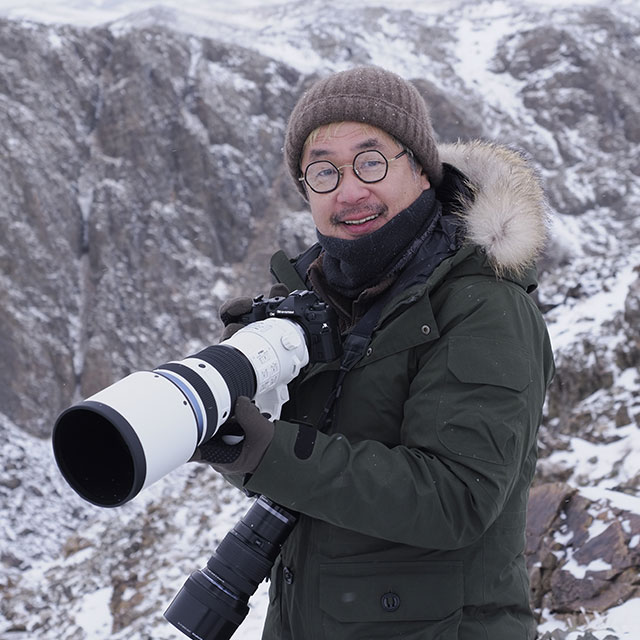
Tetsuro Shimizu

Tetsuro ShimizuJapan
Born in Yokohama City in 1975. After graduating from the Nippon Photography Institute, Shimizu worked as an assistant to photographer Toshinobu Takeuchi for three years and then began freelancing at 23. Active in a wide variety of genres including nature to snapshots and documentary photos with a unique point of view. His photo collections include CHANGE, New Type, Otamajakushi Genetic Memory (Tadpoles’ Genetic Memory), Wadachi (Track), Tokyo Karasu (Tokyo Crows), and the photo essay Umatabi - Mongoru 20 Nenkan Shuzai Shita Shashinka no Kiroku (Journey on Horseback - The Journal of a Photographer Covering Mongolia for 20 Years). Holds many individual exhibitions. Main awards include the 1st Yonosuke Natori Photography Award, the 2014 Photographic Society of Japan Newcomer’s Award, and the 2016 Sagamihara Photography Newcomer Honorable Mention Award. He is a director of the Japan Professional Photographers Society and a part-time lecturer in the Department of Photography, College of Art, Nihon University.
Departing the capital of Mongolia, Ulan Bator, I travelled for 3 days across 700km of paved roads and off-road for 350km to Khermen Tsav in the western-most region of Gobi Gurbansaikhan National Park. Arriving in the area the landscape that stretches out around me is bleak and unchanged from the last time I visited three years ago. No one lives in the region, it is a vivid reminder of the primordial earth that the dinosaurs once roamed but are now no more than fossils millions of years old. Taking in the scenes of untouched landscapes, my heart dances at the thought of capturing beautiful images with the latest Olympus camera, the OM-D E-M1X.

The bleak open plains and valleys of the Gobi provide the perfect conditions for wild blustery winds. Fighting against a natural phenomenon is impossible and surviving in the conditions a challenge that you must be equipped for. Wind speeds can exceed 30 meters per second during sand storms which I have encountered twice previously. On these occasions I packed up my tent and took refuge in a four-wheel drive which shook and shuddered until the wind died down. The guide who accompanied me on that trip nervously told me that if the wind was still blowing the following morning, it would continue for three days. And, if it does not stop by the morning of the third day then the sandstorm would continue ravaging for a week. Even during the night before we set out for this trip the wind blew through the camp so violently that I was only able to sleep lightly as it seemed our tent would be swept away. Fortunately during breakfast the wind stopped, and I was able to venture out to capture the images I wanted. The durability of the Olympus equipment was tested many times whilst I was in Mongolia with the dustproof, splashproof and freezeproof weather sealing withstanding the extreme environment. During the three week 4,000km expedition across the Gobi, whipped by winds and dust the cameras never failed showing the strength and durability of Olympus camera equipment to perform in the harshest conditions.

I found the ”Handheld High Res Shot” technology in the OM-D E-M1X to be particularly useful during my travels through the Gobi. This multi-shot technology creates high-quality and high-resolution images from multiple shots hand-held without with need for a tripod, providing a dramatic improvement to a photographer’s mobility and freedom to shoot anywhere.

For wildlife photography, I used the M.Zuiko Digital ED 300mm F4.0 IS PRO lens, which provides 7 shutter speed steps of compensation through improved Sync IS and the in-camera 5-axis IS. Significantly reducing the impact of camera shake even using a telephoto lens. The new camera also features Live ND, evolved Live View Boost and an array of other astonishing innovations. For photographers the OM-D E-M1X represents a new level of creative possibilities.











